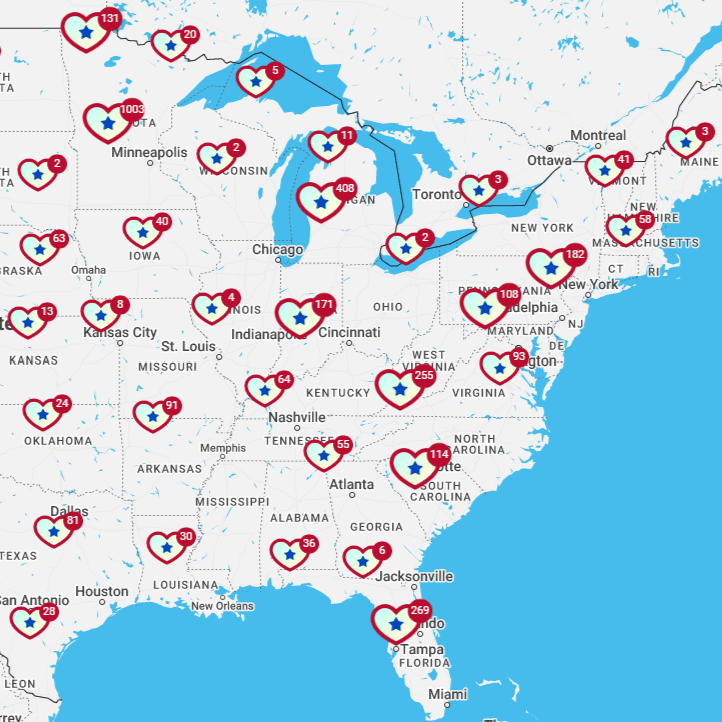
Social Democracy vs. Democratic Socialism: What’s the Difference?
At first glance, social democracy and democratic socialism may seem like interchangeable terms. Both support economic equality, expanded social programs, and greater government involvement in the economy, all within a democratic political framework. But beneath those surface similarities lie important ideological differences that shape how these beliefs play out in policy, politics, and party alignment.
In a country where 43% of adults identify as politically Independent, it’s crucial to understand the distinction between different ideologies. That’s especially true for voters who lean progressive but don’t love rigid partisan labels. In this article, we’ll define each ideology, highlight their differences, and explore how both relate to Independent and third-party politics in the United States.
What Is Social Democracy?
Social democracy is a political belief that supports capitalism but with guardrails. Social democrats believe people should be able to own businesses and make profits, but they also think the government should step in to make sure things are fair for everyone. That means creating laws and programs that protect workers, support families, and reduce poverty.
In a social democracy, the government doesn’t control the whole economy. Instead, it makes rules to keep powerful corporations in check and provides essential services like healthcare, education, and housing.
Social democrats typically support:
Universal healthcare
Strong labor rights
Public education and infrastructure investment
Progressive taxation
Regulations that curb corporate excesses
The idea is to make sure everyone has a fair shot at a good life, even if they weren’t born into wealth or privilege. These aren’t fringe beliefs, either. According to Gallup, 57% of Americans believe the government should ensure everyone has health coverage, and 43% think it should be a government-run system.
Ultimately, social democracy works within democratic systems, like voting and elections, to create change through reform rather than revolution.
LEARN MORE: Understand what social liberalism is and how it works with political ideologies.
Examples of Social Democrats
Prominent politicians who align with social democratic ideals include:
Senator Elizabeth Warren (D-MA): Advocates for financial regulation and expanded social programs but does not identify as a socialist.
Former President Franklin D. Roosevelt: The New Deal is often cited as a foundational moment in American social democracy.
Swedish Prime Minister Olof Palme: Internationally, Sweden's political system is a well-known example of social democracy in action.
Social democracy has historically worked within mainstream party systems, and many American social democrats align with the Democratic Party’s progressive wing.
What Is Democratic Socialism?
Democratic socialism is a political belief that goes further than social democracy. Democratic socialists think the entire economic system needs to change to give ordinary people real power and shift control away from wealthy elites, big money, and major corporations.
Democratic socialists still believe in democracy, voting, and civil rights. But they also believe that the economy should work for everyone, not just the richest few.
They often champion:
Public ownership or cooperative control of key industries like healthcare, energy, and housing
Worker-owned businesses and unions
Strong social welfare programs
Democratic governance of the economy
In short, democratic socialists want to move beyond capitalism, not just make it more fair. They believe that true equality and freedom are only possible when people have both political rights and economic rights.
Examples of Democratic Socialists
Notable figures who identify with or are aligned with democratic socialism include:
Senator Bernie Sanders (I-VT): A self-described democratic socialist who supports Medicare for All and worker cooperatives.
Representative Alexandria Ocasio-Cortez (D-NY): A member of the Democratic Socialists of America (DSA), advocating for a Green New Deal and economic justice reforms.
Eugene V. Debs: A historical example, Debs ran for president five times in the early 1900s on a democratic socialist platform.
Most democratic socialists in the United States work within the Democratic Party but organize independently through groups like the DSA. Support for democratic socialism is growing, too. For instance, between 2016 and 2020, DSA membership grew from around 5,000 members to over 50,000.
LEARN MORE: Explore 56 different political ideologies and where you might fit.
Key Differences: Social Democracy vs. Democratic Socialism
While social democracy and democratic socialism share some big-picture goals like reducing inequality and protecting workers, they take different approaches to how change should happen and how the economy should work.
Here’s how they differ:
View of Capitalism
Social Democracy: Believes capitalism can be made fairer through rules, regulations, and safety nets.
Democratic Socialism: Believes capitalism inherently creates inequality and should be replaced with a more democratic and cooperative economy.
Economic System
Social Democracy: Supports a market economy where private businesses exist, but the government provides strong public services.
Democratic Socialism: Envisions public or cooperative ownership of major industries and more direct control by workers and communities.
Main Goal
Social Democracy: Reform the system to work better for everyone.
Democratic Socialism: Transform the system to give ordinary people more power over their lives and the economy.
Political Alignment
Social Democracy: Often works within existing major parties, like the Democratic Party.
Democratic Socialism: Frequently works through grassroots organizations like the DSA and supports Independent or third-party strategies.
How Each Ideology Relates to Independent Politics
Despite operating in overlapping progressive spaces, social democrats and democratic socialists relate to political parties and Independent politics in different ways.
Social Democracy and Party Politics
Social democrats tend to work within the traditional party structure. That usually means aligning with the Democratic Party, especially its progressive wing. They often pursue policy changes through bipartisan reform and legislative compromise, making them more likely to participate in partisan primary elections or build influence within existing political coalitions.
While some social democrats may register as Independents, their strategies are more reformist than revolutionary.
LEARN MORE: Discover the real reasons the United States has a two-party system.
Democratic Socialism and Political Independence
Democratic socialists are more likely to challenge the two-party system. Many organize through the Democratic Socialists of America (DSA), the largest socialist organization in the United States, which functions independently of any political party. While some DSA members run on Democratic ballots, others explore third-party and Independent campaigns to advance structural change.
Democratic socialists also tend to be more open to electoral fusion, coalition-building with labor and tenant organizations, and issue-based campaigns that transcend party lines. Their vision aligns more closely with non-partisan or Independent politics, even when they participate in partisan elections for strategic reasons.
LEARN MORE: See how many political parties there are in the United States.
Shared Values, Different Strategies
Both social democrats and democratic socialists want to reduce inequality, expand public services, and ensure that everyday people have a voice in politics. The difference lies in how far each is willing to go in reshaping the economic system and which pathways they believe are most effective for change.
Some shared goals between democratic socialists and social democrats include:
Greater economic equality
Universal access to healthcare and education
Protection of civil liberties and democracy
However, social democrats believe in using reform, working within the existing two-party system, and implementing incremental regulations to reach these goals. Democratic socialists, on the other hand, advocate for a transformation of capitalism, dismantling the two-party system, and using democratic ownership models to achieve these outcomes.
LEARN MORE: Build your civic knowledge with our beginner-friendly guide to politics.
The Bottom Line: A Spectrum of Progressive Politics
Understanding the nuances of social democracy vs. democratic socialism helps clarify the broader landscape of left-leaning political thought. While both movements advocate for a fairer, more inclusive society, they differ in how deeply they aim to restructure the economy and what role they see for existing political institutions.
Whether you lean toward reforming capitalism or replacing it, the key takeaway is this: you don’t have to fit neatly into the two-party system to make a difference.
At GoodParty.org, we believe in breaking barriers, not fitting into them. Whether you're a social democrat, democratic socialist, or anywhere else on the political spectrum, you deserve better choices and a real voice in our democracy.
Independent, non-partisan, and third-party candidates can all use our free tools and campaign support. With GoodParty.org, you can find aligned candidates in your community, launch your own campaign, and run and win without selling out.
Photo by Vidar Nordli-Mathisen on Unsplash
Sign up today to access free tools for Independent campaigns across the political spectrum.
